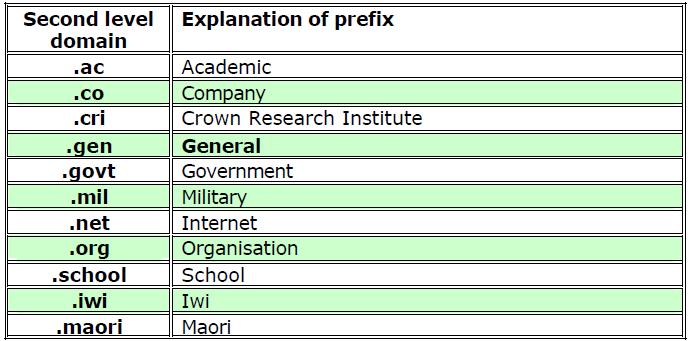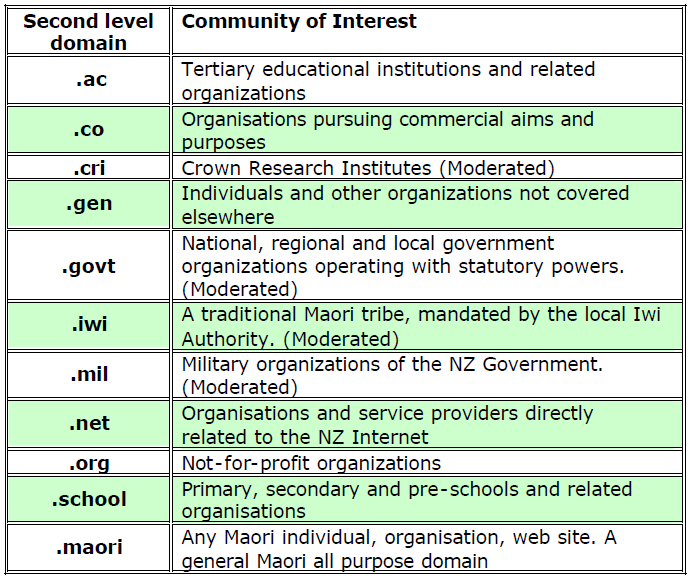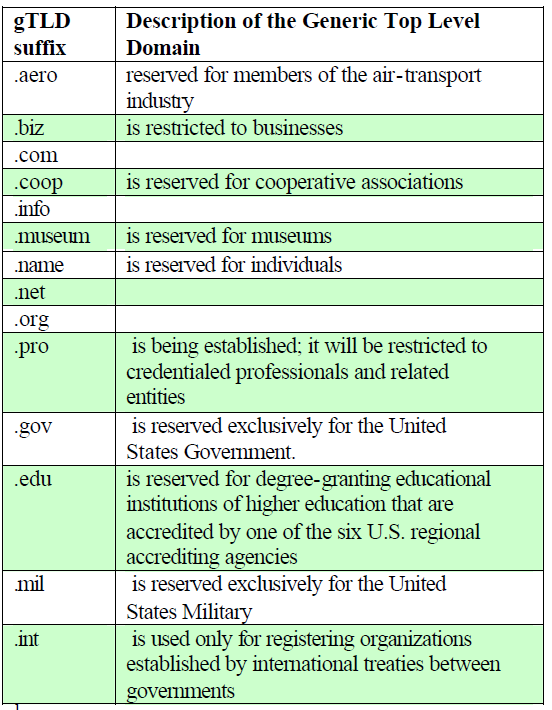With information relating to .iwi.nz and .maori.nz and domain name disputes (2016)
Karaitiana N Taiuru and Te Rangikaiwhiria Kemara
Fist published in 2016 as a pdf. Republished in 2023 as a post.
Introduction
This paper is a beginners guide to Internet Domain names in New Zealand with some reference to other domain names outside of New Zealand. The information in this document may not be accurate to other domain names outside of New Zealand.
It is not intended to be a comprehensive document nor is it a technical paper. Some sections are not in full detail for the reason that this is only an introduction to the area for the end user. In fact some sections were very difficult to write considering this document is only intended to be an Introduction.
This paper was originally written for the members of the New Zealand Maori Internet Society http://www.nzmis.org.nz and the media who followed the .maori.nz life cycle.
This document may be relevant to anyone who is interested in the Internet and whom is not familiar with the naming system. This could include individuals, web authors, people/groups intending registering their first domain name and people who are interested in the basics of the Internet and it’s structure inside New Zealand.
2. A brief history of the Internet and World Wide Web
The Internet was created in 1969 when it was known as ARPANET. It was originally a research project developed by an agency called ARPA (Advanced Research Projects Agency) within the US Defence Department, in conjunction with a number of universities and military
contractors.
The purpose of the research project was to explore the possibility of a communication network that could survive a nuclear attack. The way they achieved this was to make data take multiple paths from its source to its destination. If part of the network was destroyed, communications would still be possible through a different path.
Although ARPANET had humble beginnings as a research project, ARPANET quickly developed into a communication tool. ARPANET was used for email, transferring files from one place to another and for discussion.
The World Wide Web idea was originally created at CERN – (the European Laboratory for Particle Physics) by Tim Berners-Lee who had previously worked with hypertext and recognised its appropriateness for this project . The project was implemented in 1992.
CERN needed a way to keep track of their information and documentation so that it could be easily accessed and updated.
In 1993 Marc Andreesen of NCSA (National Centre for Supercomputing Applications) developed a program called ‘Mosaic’ .Mosaic was the first graphical Web browser – it allowed text, graphics, sounds and other multimedia to be viewed in one document. This revolutionised the Web and brought its potential to the attention of the rest of the world.
3. Briefly what is a Domain Name
Briefly a domain name can be thought of as an unique Internet Address. An address that enables people who use it to visit your web site.
An example of a domain is nzmis.maori.nz.
Domain names are also used for email addresses too. An example is yourname@nzmis.maori.nz
4. What is a 2nd Level Domain
A second Level Domain is usually an abbreviation that represents the community of interest inside the .nz structure (Further details in next section). In two cases, instead of a suffix the whole word is provided as seen in the table below. The suffix is proceeded by .nz (suffix for New Zealand), for example in the address www.nzmis.org.nz the .org is the second level domain.
Currently New Zealand have eleven 2nd Level domains as described in the table below. Since 1996 .nz had ten 2nd Level domains till the creation of .maori.nz in September 2002.
At the time of writing this document, the Banking Association have submitted their second submission for the 2nd Level domain .bank.nz

5. New Zealand’s current 2nd Level Domains with description
Below are the current 2nd Level Domains available in New Zealand and a brief description of the community of interest. The community of interest below is “not” intended to be compulsory unless the domain is moderated.
Before registering a domain name, decide what category your intended audience is likely to use to find your web site. eg if you are to register a domain name for your school called “myschool” the likely option is .school as opposed to .co.
If you are to register a domain name for a company then .co is one likely option as opposed to .school.
A non-commercial organisation may use <.co> as opposed to being restricted to using one of the other suffixes below. The author of this paper uses <.co> for a non profit information site on the web and his email.
You can also, (if the domain names are available) register multiple 2nd Level Domains as well as other country domains.
For example an individual called John Smith can (pursuant to availability) register johnsmith.co.nz, johnsmith.net.nz, johnsmith.gen.nz, johnsmith.org.nz, johnsmith.ac.nz, johnsmith.school.net.nz all for his own personal use.

6. What is a third level domain name.
A third level domain name is the part of your email or address. Although an annual fee is paid to use the third level domain name, no one owns it. You purchase the right to use it for a set amount of time.
In the following example I have broken up a domain name I have registered and show you how it is made up. The capital letters below have been included to make it easier to read.

The reason I applied for the above domain was that I have a free Maori Spell Checker and wanted a relevant web site that people could remember and that was relevant to the content on the site. Hence I chose www.maoriSpellChecker.net.nz 1.
All the emails to do with the site above has @maorispellchecker.net.nz email. This also helps people remember my URL.
7. Choosing a 3rd level domain name
For the majority of people you can let your imagination run wild and you can choose anything you like. There are a 4 minor considerations that do not affect most people but should be pointed out just in case.
(a) Your descriptive name must contain, letters a-z, 0-9 or hyphen.
(b) The name may not begin with or end with an hyphen but must end and begin with letters or numbers.
(c) your third level domain name may not contain more than 65 characters
(d) The total amount of characters in the complete address may not be more than 255 characters.
When choosing the 3rd level domain for a web site you should make sure that the name you choose is descriptive of your web site or related to the content to help attract visitors. Section 4 above shows an example of how the author chose one his 3rd Level Domain names.
8. What is .nz
.nz is a suffix for New Zealand. Each country in the world that is included in the ISO 3166-1 list is given a two letter suffix as .nz for New Zealand and .au for Australia. These suffixes are called Country Code Top Level Domain (ccTLD) .
The ISO 3166-1 list is a broadly accepted list of country codes intended for many uses, not simply for use as ccTLD codes.
Each country that has an active ccTLD has a group that manages the ccTLD. In New Zealand it is the role of InternetNZ to manage .nz. This is the reason that the Maori Internet Society had to follow the processes for .maori.nz that InternetNZ had set out.
9. What is a moderated domain name.
A moderated domain name refers to the 2nd Level domain. Moderated domains are created when the domain is first created and the community of interest ask that it be moderated, usually to protect the community of interest.
For example .iwi is moderated to ensure that only Maori Iwi can use it. There have been a plethora of people and organisations try to register names with the .iwi.nz domain including a security firm using the name of a well publicised jail as the third level name.
Out of the 11 existing second level domain names only 4 are moderated. The moderated domains are .iwi, .cri, .govt and .mil .
Applying for a moderated domain is the same as with any other domain but the application goes to Domainz who then sends the application to the person/organisation responsible for moderating that domain “Moderator”. Unmoderated domains are usually automatically registered if the name is available. The moderator then approves or declines the application. Domainz then inform the applicant.
Regarding .iwi.nz, Once an application is received from Domainz by the moderating party, the applicant is checked and if it is obvious that the applicant is not a Maori Iwi an explanation why it was declined is sent to Domainz. The applicant then receives an email from Domainz stating that their application for .iwi.nz is refused. They are then left with the choice of either using an alternative domain or not using one at all.
If there is doubt or further questions regarding the applicant being an iwi, the applicant is emailed and asked that further proof is provided.
If it is proved the applicant are an iwi and meet the criteria set out in the moderation requirements they are approved .
10. What is .maori.nz
.maori.nz is a 2nd Level Domain. Before the creation of .maori.nz, Maori individuals, companies, hapu and other community organisations including many Iwi had to choose for a list of six appropriate 2nd Level domains for their web site and email addresses. For most people
and groups the list of six did not adequately describe who they are.
.maori.nz gives people the chance to register a domain name that ends in .maori.nz as opposed to .co.nz, .net.nz,.org.nz, .gen.nz.ac.nz or .school.nz none of which adequately describe a hapū or a Marae etc.
Some iwi and hapū will use .maori.nz as an alternative to the moderated .iwi.nz because they are not eligible to use .iwi.nz .
Using yourname.maori.nz will allow you to do all the same things as you can with the other existing domain names: email, web sites (URL), FTP, etc.
.maori.nz is not moderated. Anyone may apply for a .maori.nz domain.
11. The difference between .iwi.nz and .maori.nz
Summary
.iwi.nz is only for a Traditional Maori Iwi with a Trust board. .maori.nz is for anyone to use.
At time of writing the 2nd application (2000-2001) for the.maori.nz it was envisaged that any Maori group or individual including Maori iwi, hapu, individuals and other groups who were not eligible for .iwi.nz would use .maori.nz.
.iwi.nz was initiated by a government department to cater towards Iwi groups in New Zealand. This was seen as a controversial move as many saw the department had ulterior motives.
.iwi.nz criteria excludes all Maori hapu, individuals and any other Maori group. .maori.nz caters to all of those who do not meet the criteria of .iwi.nz. Successful applicants of .iwi.nz can also have a .maori.nz domain.
12. How to obtain .maori.nz and other.nz 2nd Level domain
All .nz 2ndLevel Domain names need to be purchased from what is termed a “.nz provider”. Usually the most convenient place is the place you obtain your Internet connection from (ISP). If for any reason you do not want to or can not use your ISP they should be able to advise where else you can purchase a domain name from.
Alternatively you can ask your web designer, web hosting company or visit the Domain Name Commissioner web site for a list of accredited .nz providers. The name provider is likely to have a form on their web site that allows you to search for available names. Others have the form and the option to make an online purchase.
13. The role on InternetNZ and DNC
InternetNZ is responsible for the management of the .nz space including 2nd Level Domain names and applications for the creation of new 2nd Level Domain names. Domain Name Commissioner (DNC) is responsible for the day to day oversight of the .nz domain name registration and management system. This is a new position and initially the focus will be on overseeing the final stages of the transition to the Shared Registry System (SRS). The DNC is an operational office of InternetNZ, the Internet Society of New Zealand Incorporated.
14. Generic Top Level Domain Names (gTLD)
A generic Top Level Domain is the last suffix on a domain. Instead of seeing .nz or or other Country code at the end of a domain, the suffixes in the table below are at the end. An example of this is in the URL www.aotearoalive.com

Usually your Internet Service Provider will either sell these domains or be able to
point you at a web site that does. If not try looking at www.iana.org for registrar’s http://www.iana.org/gtld/gtld.htm
15. Country Code Top Level Domain ccTLD
Many countries in the world have been assigned a two letter suffix by a politically neutral organisation ISO “International Standardization Organization”. The two letter suffixes are then added to the ISO 3166-1 list 1 which IANA/ICANN assign ccTLD ‘s
A full list of Country Code Top Level Domains can be found in Appendix 3.
How to obtain Country Code Top Level Domain Names
Usually your Internet Service Provider will either sell these domains or be able to point you at a web site that does. If not try looking at www.iana.org for registrar’s
16. Infrastructure Top-Level Domain – .arpa
The .arpa domain is the Address and Routing Parameter Area domain and is designated to be used exclusively for Internet-infrastructure purposes. It is administered by the IANA in cooperation with the Internet technical community under the guidance of the Internet Architecture Board http://www.iana.org/arpa-dom/
17. Disputing ownership of Domain Names
There are 3 options available at the moment.
1. select a different domain name. This is the most simplest option. For example if your iwi name is already gone try adding ngati, ngai etc to the front or adding a hyphen (-) or thinking of another way around it.
2. attempt to purchase the domain name from the current holder. Attempting to purchase the domain name back from the current holder is “strongly NOT ADVISABLE”. By doing so you will be encouraging others to cyber squat (purchase names to be sold at inflated prices).
In the past a certain individual has purchased rights to a number of unique Māori names including iwi names in the .co, .net etc . In order to get around this individuals have followed option 1.
3. attempt to force the current holder to return it to you. This is more complex and will more than likely require legal advise/representation.
Options here include:
· Fair Trading Act 1986
· Trade Marks Act
· High Court
· Uniform Domain Name Dispute Resolution Policy http://www.icann.org/udrp/udrp.htm
APPENDIX 1
Criteria to apply for a new 2nd Level Domain Name to be created In the following “InternetNZ Council meeting” is understood to be a physical rather than electronic meeting of Council. A number of time periods are given with minimum and maximum lengths. This is designed to allow InternetNZ to avoid having crucial dates occur during major holiday periods. In most cases InternetNZ is expected to meet the MINIMUM time period specified.
1. * Any individual or organisation may initiate the process of creating a new second level domain, or changing the definition of a current second level domain within `.nz’, by sending a proposal to InternetNZ. The proposal should clearly set out the justification for the new domain with respect to these principles.
These principles represent a set of attributes that we would expect of any second level domain name. These attributes can be used to measure the quality of an argument supporting the creation of a new second level domain and proposals for new second level domains will be expected to justify the new domain with respect to these principles.
2. Associated with each second level domain should be a clear statement of a common interest shared by entities that are expected to request names within the domain, e.g. tertiary educational institutions.
3. Proposals for new second level domains should provide a proposed statement describing the community of interest for the domain and an argument indicating why this community requires a new second level domain.
4. The abbreviation used to represent the domain should be an obvious derivative of a word that properly describing the domain, e.g. .ac for
academic.
5. Minimum ambiguity should exist between different second level domain names, i.e. ideally their communities of interest should not overlap. If the proposal fails to address these expectations it will be returned to the proposer for further development.
6. InternetNZ will post appropriate proposals on the Internet and advertise a REQUEST FOR DISCUSSION (RFD) on its mailing lists and appropriate discussion groups.
7. Not less than 60 nor more than 90 days after the RFD, InternetNZ will issue a REQUEST FOR VOTES on the proposal. This straw poll is intended to measure support for the proposal. The outcome will be non-binding.
The poll will take place by electronic mail with all voters submitting a standard ballot which will be distributed on relevant mailing lists and
discussion groups. Votes will be accepted for the following 14 days.
Votes will be counted by InternetNZ or an agent appointed by InternetNZ. Ballots will be declared invalid if they do not conform to the standard or more than one ballot is received from the same person (email address).
8. If in the straw poll, the proposal receives support from less than 70% of the votes cast, or receives less than 200 votes in total it will be rejected and no further consideration will be given. InternetNZ will not entertain a similar proposal for twelve months.
9. If the poll succeeds that applicant will be required to pay a non-refundable application fee of NZ$1000.00 (one thousand NZ dollars) to advance the proposal.
10. InternetNZ will issue a REQUEST FOR SUBMISSIONS on its mailing lists and appropriate discussion groups and other appropriate outlets. The period for submissions will be not less than 30 no more than 60 days. All submissions will be posted on the Internet for public review.
11. At the first meeting of the InternetNZ Council following the close of submissions, the Council will issue an INTERIM DECISION. The interim decision will be widely distributed to the Internet community, to the community associated with the proposed domain, and to the wider public.
Further submissions on the interim decision will be accepted for a period which will end 14 days before the following InternetNZ Council meeting.
12. A FINAL DECISION will be made by the InternetNZ Council at the first meeting following the meeting which issued the interim decision. This decision will be binding.
Sources:
http://www.internetnz.net.nz/dns/2nd-level-domains/2ld001204principles.html
http://www.internetnz.net.nz/dns/2nd-level-domains/2ld001204process.html
APPENDIX 2
.maori.nz application (second and final)
Te Whänau Ipurangi/New Zealand Mäori Internet Society
Overview
New Zealand is a bicultural country with two official languages that may be spoken anywhere. As with any bicultural country, allowances should be made to accommodate both cultures.
Presently the New Zealand Internet domain name system has not addressed the bicultural needs of New Zealand nor it’s growing Mäori Internet users. 46% of New Zealand Mäori have Internet access and 65% of New Zealand European’s have Internet access 1.
A small effort was made in the past with the creation of .iwi.nz but this only caters to 30-40 groups in New Zealand, many of which are either not on the web or are not structured enough to apply for <.iwi.nz> (further discussion in Principle 2).
2. Qualifying Criteria
Main Principles for Registration of Second Level Domain Names InternetNZ, which administers the New Zealand Internet domain name system, has defined the criteria for second level domain names. The criteria as follows:
- 1. There is a clear common interest shared by the entities that would reside within the domain – i.e. there exists a community of interest.
2. Communities of interest do not overlap, so far as is practicable.
3. The domain name clearly indicates or describes the nature of the community of interest.
4. The community of interest is certain of continued existence.
These requirements are addressed in the following sections.
Principle One: Community of Interest
Te Whänau Ipurangi/New Zealand Mäori Internet Society is a large Incorporated Society of over 1200 members. Due to our diverse membership we are the only authoritive spokes-group for Mäori. We are a spokes group for organisations such as Te Puni Kôkiri (Ministry of Mäori Development) regarding the digital divide and are group members of other organisations such as the “Electronic Action Team Network (EATN)”.
Most of the 1200 members are supporters of <.maori.nz>. We are applying for <.maori.nz> on behalf of all Mäori.
1. AC Nielson Netwatch 2000
Principle Two: No Overlapping of Communities of Interest
General
It could be said that <iwi.nz> and <maori.nz> are overlapping names. However whilst it is true that <iwi.nz> could be subsumed by <maori.nz>, the reverse is not the case, for <maori.nz> is the much wider descriptor.
<iwi.nz>
The domain name <iwi.nz> represents a traditional social and political organisation, which today is evolving into an economic organisation as well. At the moment it would apply to between 30 and 40 recognised tribal groups, not all of which have become formally incorporated in the non-Mäori sense, and therefore eligible to register an <iwi.nz> domain name. There are presently about eighteen <iwi.nz> domain names registered, and we expect more to be registered in due course.
With such low registrations it might be thought that it ought to be cancelled as a domain name. However it does represent a special form of Mäori organisation, some of which are also developing into major entities within the Aotearoa New Zealand economy. The modern form of these entities is developing out of organisations that have existed for as long as the history of the Mäori people in Aotearoa New Zealand, and no other descriptor other than <iwi.nz> can adequately describe them. To try to describe them by later imported names such as <co.nz> or <org.nz> would be to deny their special meaning, and their historical significance.
It might also be thought that eligibility for the domain name <iwi.nz> could be widened to describe a greater range of Mäori organisations.
The descriptor “iwi”, as it describes both a traditional and a modern organisation, has a clearly defined meaning in Mäori society. This is quite restrictive and is the meaning chosen by TWI / NZMIS, To widen eligibility would be to debase the meaning of “iwi”.
<iwi.nz> has a definite place in the hierarchy of domain names as a traditional and modern social, political and economic Mäori organisation which is not described by any other domain name.
<maori.nz>
It could also be said that <maori.nz> would overlap many other domain names, and that Mäori people could adequately be catered for under existing names. Nevertheless, the most important factor is that “Mäori” is the way that Mäori people choose to describe themselves, and they are almost always described as “Mäori” by non-Mäori people. In this proposal Mäori people are simply asking that they be
allowed to prescribe their own descriptor of themselves.
We are not asking for anything new. We are merely asking that an oversight be corrected. It is understandable that Mäori domain names were not created at the time, given that the widespread application of the internet, and its widespread adoption by Mäori, could easily have been overlooked.
<maori.nz> will be widely used by individuals and organisations, and we predict that it will be a popular domain name.
Principle Three: Degree of Descriptiveness
“Mäori” is the way Mäori people and their organisations invariably describe themselves, and it is the way they are described by others, the world over. The experience of TWI / NZMIS webmaster members is that tens of thousands of web-surfers from all over the world are looking for Mäori-specific information on the WWW, and that for a great many of them, “Mäori” best describes what is unique and special about Aotearoa New Zealand.
We make the point, that this proposal represents a people asking InternetNZ to help them claim their right to name themselves.
Principle Four: Certainty of continued existence
It can be guaranteed that there will always be a demand for the <.maori.nz> domain name, such is the support for it among Mäori, and such is the likely continuance of a distinctive people named Mäori.
Te Whänau Ipurangi / New Zealand Mâori Internet Society (TWI/NZMIS) is confident also that it’s 6 year existence will continue through it’s long term strategic plans, and the fact that it is a legal body registered as an Incorporated Society in 2000.
Treaty of Waitangi Considerations
Partnership As partners to the Treaty of Waitangi it is time the domains named for the New Zealand Internet community reflected the makeup of our society. Granting this application demonstrates that the NZ Internet community is determined to become bi-cultural.
Maori Language is an official Language of New Zealand The Mäori language is an official language of New Zealand regulated by statute. The
current 2nd Level domain policy has very little regard to the this fact. The one and only Mäori 2nd Level domain <.iwi.nz> is so specific it only applies to about 30-40 groups. This is not a fair representation of an official language of New Zealand.
Conclusion
Te Whänau Ipurangi/New Zealand Mäori Internet Society and it’s membership believe that there is a strong case to be made for <.maori.nz> second level domain name and that it meets the key requirements as set out by InternetNZ
Karaitiana Taiuru
Chairperson
Te Whanau Ipurangi/NZMIS
APPENDIX 3
Moderators Contact Details and Policy
cri – Crown Research Institutes
Phillip Lindsay – Email : phillip.lindsay@agresearch.co.nz
Policy
cri.nz names will only be available to bona fide crown research institutes and
application will need to be made by their authorised staff, not on their behalf by web
designers or consultants,
technical standards will be observed (eg two character names are not allowed,
names will need to be chosen which avoid confusion between crown research
institutes
.govt – National government organisations operating with statutory powers
The State Services Commission – Email : moderator@ssc.govt.nz
Policy
.govt.nz names will only be available to bona fide central or local government bodies
and will need to be registered by their authorised staff, not on their behalf by web
designers or consultants;
technical standards will be observed (eg two character names are not allowed);
names will need to be chosen which avoid confusion between agencies;
three or four letter names will normally be used only to represent departments or other
central or local government bodies , and should be the commonly-known abbreviation
for that body; and
generic and project names should be registered in the domain only where they are
pan-departmental and of national significance
.govt – Regional and local government organisations operating with statutory
powers
Association of Local Government Information Managers (ALGIM) – Email :
mike.manson@pncc.govt.nz
Policy
The applicant must identify themselves and their organisation and state their
connection to local government . The request is approved or rejected on the basis of
the information received. If further clarification is needed then contacts in the local
government sector may be approached for verification of the status of the
organisation.
.iwi – A traditional Maori tribe, mandated by the local Iwi Authority
Karaitiana Taiuru – Email : karaitiana@taiuru.maori.nz . web
http://www.register.iwi.nz
Policy
iwi.nz is a moderated 2nd level domain. Before considering applying for iwi.nz you
must meet the following.
Criteria 1. You must be a traditional Maori tribe, Hapu that belongs to a traditional
Maori Iwi or taura here Iwi group operating with the permisison of the main Iwi.
Criteria 2. You must be a legal body.
Introduction to understanding Domain Names in New Zealand with information
relating to .iwi.nz and .maori.nz and domain name disputes
Page 30 of 30
Criteria 3. Only genuine Maori names will be allowed in the domain pursuant to the
following:
(a) If an Iwi is known by an abreviation then they shall be accepted with their
abreviation as their iwi name.
(b) Tribal project names and tribal owned companies will not be acepted in iwi.nz .
Notes:
1. Multiple .iwi.nz names per Iwi are permissable.
2. Tribal dialect is permissible in iwi names.
3. The use of ngai, ngati or other tribal suffix is applicable in the name but is optional.
4. Technology prohibits the use of macrons in domain names.
5. Urban Maori groups may apply for .iwi.nz if the following is met:
a. Must have been established for over 12 months.
b. A legal body
c. Must represent a reasonable proportion of urban Maori in your area.
d. Poses a database of all members.
e. Criteria 3 is met.
.mil – Military organisations of the NZ Government
Peter Miller – Email : peter.miller@nzdf.mil.nz
Policy
Full justification of request made to NZDF by application party. This person/s should
either be:
Local IS or System Manager
Base or Unit Commander
Criteria for judgement of whether name is appropriate:
Name suitability to function required.
Potential subversive names that could discredit NZDF
Any new request for 3rd level domain names must first be authorised by NZDF (JCIS
Directorate).
Introduction to understanding Domain Names in New Zealand with information
relating to .iwi.nz and .maori.nz and domain name disputes
APPENDIX 4 Criteria to be considered for the second level domain .iwi.nz
iwi.nz is a moderated 2nd level domain. Before considering applying for iwi.nz you must meet the following.
Criteria 1. You must be a traditional Maori tribe, Hapu that belongs to a traditional
Maori Iwi or taura here Iwi group operating with the permission of the main Iwi.
Criteria 2. You must be a legal body.
Criteria 3. Only genuine Maori names will be allowed in the domain pursuant to the following:
(a) If an Iwi is known by an abbreviation then they shall be accepted with their abbreviation as their iwi name.
(b) Tribal project names and tribal owned companies will not be accepted in iwi.nz .
Notes:
1. Multiple .iwi.nz names per Iwi are permissible.
2. Tribal dialect is permissible in iwi names.
3. The use of ngai, ngati or other tribal suffix is applicable in the name but is optional.
4. Technology prohibits the use of macrons in domain names.
5. Urban Maori groups may apply for .iwi.nz if the following is met:
a. Must have been established for over 12 months.
b. A legal body
c. Must represent a reasonable proportion of urban Maori in your area.
d. Poses a database of all members.
e. Criteria 3 is met.
Appendix 5 Country Top Level Domain List
List taken from http://www.iana.org/cctld/cctld-whois.htm .
For details of where to register a domain within any of the countries below please visit the before mentioned URL.
ac Ascension Island
ad Andorra
ae United Arab Emirates
af Afghanistan
ag Antigua and Barbuda
ai Anguilla
al Albania
am Armenia
an Netherlands Antilles
ao Angola
aq Antarctica
ar Argentina
as American Samoa
at Austria
au Australia
aw Aruba
az Azerbaijan
ba Bosnia and Herzegovina
bb Barbados
bd Bangladesh
be Belgium
bf Burkina Faso
bg Bulgaria
bh Bahrain
bi Burundi
bj Benin
bm Bermuda
bn Brunei Darussalam
bo Bolivia
br Brazil
bs Bahamas
bt Bhutan
bv Bouvet Island
bw Botswana
by Belarus
bz Belize
ca Canada
cc Cocos (Keeling) Islands
cd Congo, Democratic Republic of the
cf Central African Republic
cg Congo, Republic of
ch Switzerland
ci Cote d’Ivoire
ck Cook Islands
cl Chile
cm Cameroon
cn China
co Colombia
cr Costa Rica
cu Cuba
cv Cap Verde
cx Christmas Island
cy Cyprus
cz Czech Republic
de Germany
dj Djibouti
dk Denmark
dm Dominica
do Dominican Republic
dz Algeria
ec Ecuador
ee Estonia
eg Egypt
eh Western Sahara
er Eritrea
es Spain
et Ethiopia
fi Finland
fj Fiji
fk Falkland Islands (Malvina)
fm Micronesia, Federal State of
fo Faroe Islands
fr France
ga Gabon
gd Grenada
ge Georgia
gf French Guiana
gg Guernsey
gh Ghana
gi Gibraltar
gl Greenland
gm Gambia
gn Guinea
gp Guadeloupe
gq Equatorial Guinea
gr Greece
gs South Georgia and the South Sandwich Islands
gt Guatemala
gu Guam
gw Guinea-Bissau
gy Guyana
hk Hong Kong
hm Heard and McDonald Islands
hn Honduras
hr Croatia/Hrvatska
ht Haiti
hu Hungary
id Indonesia
ie Ireland
il Israel
im Isle of Man
in India
io British Indian Ocean Territory
iq Iraq
ir Iran (Islamic Republic of)
is Iceland
it Italy
je Jersey
jm Jamaica
jo Jordan
jp Japan
ke Kenya
kg Kyrgyzstan
kh Cambodia
km Comoros
kn Saint Kitts and Nevis
kp Korea, Democratic People’s Republic
li Liechtenstein
lk Sri Lanka
lr Liberia
ls Lesotho
lt Lithuania
lu Luxembourg
mn Mongolia
mo Macau
mp Northern Mariana Islands
mq Martinique
mr Mauritania
ms Montserrat
mt Malta
mu Mauritius
mv Maldives
mw Malawi
mx Mexico
my Malaysia
mz Mozambique
na Namibia
nc New Caledonia
ne Niger
nf Norfolk Island
ng Nigeria
ni Nicaragua
nl Netherlands
no Norway
np Nepal
nr Nauru
nu Niue
nz New Zealand
om Oman
pa Panama
pe Peru
pf French Polynesia
pg Papua New Guinea
ph Philippines
pk Pakistan
pl Poland
pm St Pierre and Miquelon
pn Pitcairn Island
pr Puerto Rico
ps Palestinian Territories
pt Portugal
pw Palau
py Paraguay
qa Qatar
re Reunion Island
ro Romania
ru Russian Federation
rw Rwanda
sa Saudi Arabia
sb Solomon Islands
sc Seychelles
sd Sudan
se Sweden
sg Singapore
sh St Helena
si Slovenia
sj Svalbard and Jan Mayen Islands
sk Slovak Republic
sl Sierra Leone
sm San Marino
sn Senegal
so Somalia
sr Suriname
st Sao Tome and Principe
sv El Salvador
sy Syrian Arab Republic
sz Swaziland
tc Turks and Caicos Islands
td Chad
tf French Southern Territories
tg Togo
th Thailand
tj Tajikistan
tk Tokelau
tm Turkmenistan
tn Tunisia
to Tonga
tp East Timor
tr Turkey
tt Trinidad and Tobago
tv Tuvalu
tw Taiwan
tz Tanzania
ua Ukraine
ug Uganda
uk United Kingdom
um US Minor Outlying Islands
us United States
uy Uruguay
uz Uzbekistan
va Holy See (City Vatican State)
vc Saint Vincent and the Grenadines
ve Venezuela
vg Virgin Islands (British)
vi Virgin Islands (USA)
vn Vietnam
vu Vanuatu
wf Wallis and Futuna Islands
ws Western Samoa
ye Yemen
yt Mayotte
yu Yugoslavia
za South Africa
zm Zambia
zw Zimbabwe






Leave a Reply